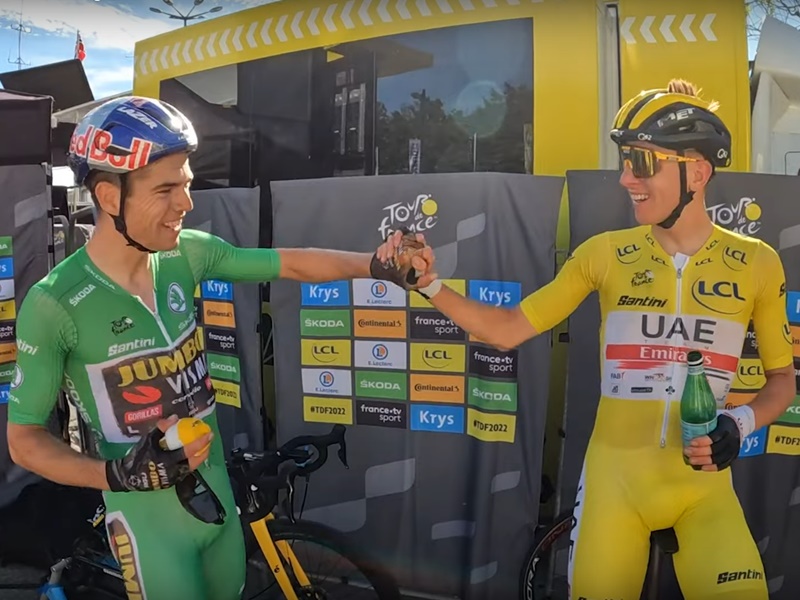
- Preview
- Week 1 recap
- Week 2 recap
Week one of the 2022 Tour de France then… Wout van Aert is taking the points, Tadej Pogacar is taking time and no-one else is quite sure what to do with themselves.
The Wout van Aert competition
This year the green jersey will be worn by the rider whose characteristics most closely match the Belgian rider, Wout van Aert. For now, and probably for the rest of the race, that rider is Wout van Aert.
After just four stages, van Aert’s advantage in the points competition was such that even if his closest rival had won a stage without him registering a single point, he’d still have retained the lead. He had achieved this through three successive second places and then a win on Stage 4. At this point in the race, second-placed Fabio Jakobsen had managed one win, a fifth place, a 13th and a 139th.
Even at this early juncture, it kind of felt like the green jersey was already decided. That sounds impossible for a 21-stage race, but remember that while the overall race is won in the mountains, the points competition is weighted against it. There are more points to be won on days that are merely hilly and more still on flat stages. Van Aert’s early dominance already represented a sizeable chunk of the competition.
By the end of the week, his lead was near enough three full stage wins.
Van Aert’s Stage 4 victory was the most memorable moment from these first few days of racing. He and his team pushed the pace on a short, sharp climb 10km from the finish in the hope of detaching rival sprinters and maybe even a general classification contender (van Aert is a team-mate of overall contenders Primoz Roglic and Jonas Vingegaard). However, as he reached the summit, van Aert realised he hadn’t merely thinned the field, he’d accidentally dropped the entire Tour de France.
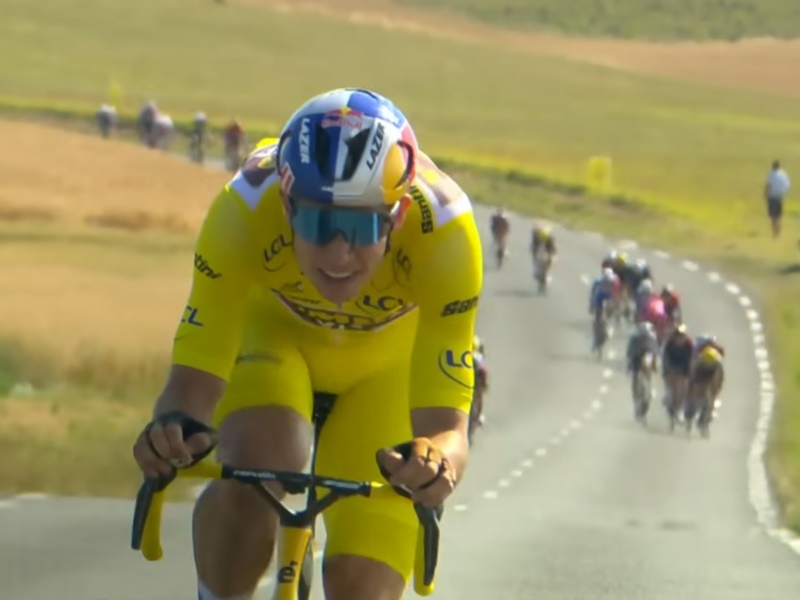
After a brief double-take, he duly rode to the finish alone, which is a pretty solid way of ensuring you aren’t outsprinted, it has to be said.
A sprint win did follow however, albeit thanks to a long and sapping uphill run to the line on Stage 8. The gradient helped weed out rival sprinters, meaning van Aert was only competing against the general classification contenders as he surged to the line.
Those kinds of hilly days are when worlds collide.
The Tadej Pogacar competition
As you’ll have gleaned from the photo above, van Aert didn’t actually wear the green jersey all that much in this first week, because he was also leading the race overall.
While he was far from the biggest imposter misleadingly clogging up the top 10 at this point, his hold on the yellow jersey was only ever really borrowed until what I like to call The First Big Mountain Clear-Out – the day when the Tour finally reaches a major climb and all the riders who have previously been doing well but aren’t actually great at long uphill efforts suddenly lose minutes.
I like this day because it’s the point at which you no longer have to do a load of mental filtering when you’re looking at the leaderboard.
This year, the First Big Mountain Clear-Out came on Stage 7 on the climb that now rather nonsensically translates as the Superplank of the Beautiful Girls after La Planche des Belles Filles was rebranded a “Superplanche” in honour of the steep kilometre of gravel they’ve tacked onto the top since it was first used in the race.
Tadej Pogacar took the stage, just a yard or so ahead of Jonas Vingegaard, who as good as collapsed on the line, unwilling to eke out even one more pedal stroke.
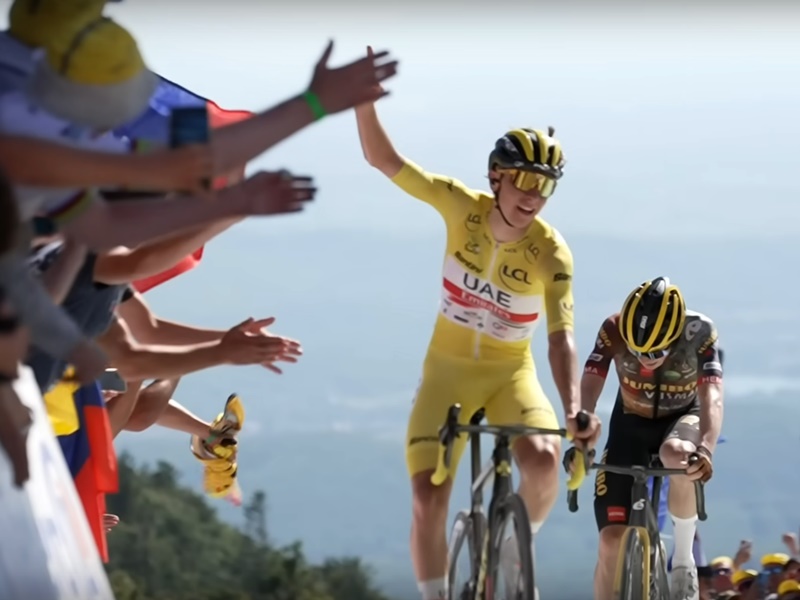
You’ll note that Pogacar was already wearing yellow at this point, van Aert having ceded the lead a day earlier after deciding a 219km stage was a good day to get in a three-man break. He was caught by the peloton after riding at 50km/h for three hours or so.
It was always a doomed move, but FDJ boss Marc Madiot (he of the strong emotions) told the Guardian he reckoned it was part of a wider Jumbo-Visma strategy to make Pogacar’s team-mates drive the bunch every single day in the hope of wearing them out. Vingegaard and Primoz Roglic, who are both Jumbo-Visma riders, remain his most likely challengers.
It’s as good a strategy as any because Pogacar is otherwise looking untouchable. He and Vingegaard had a 12-second gap on Roglic on the mountain top finish and he’d taken the lead with an unrivalled finish on the hilly Stage 6.
He’d also performed best out of the overall contenders in the opening time trial and then further increased his advantage on the cobbles of Stage 5.
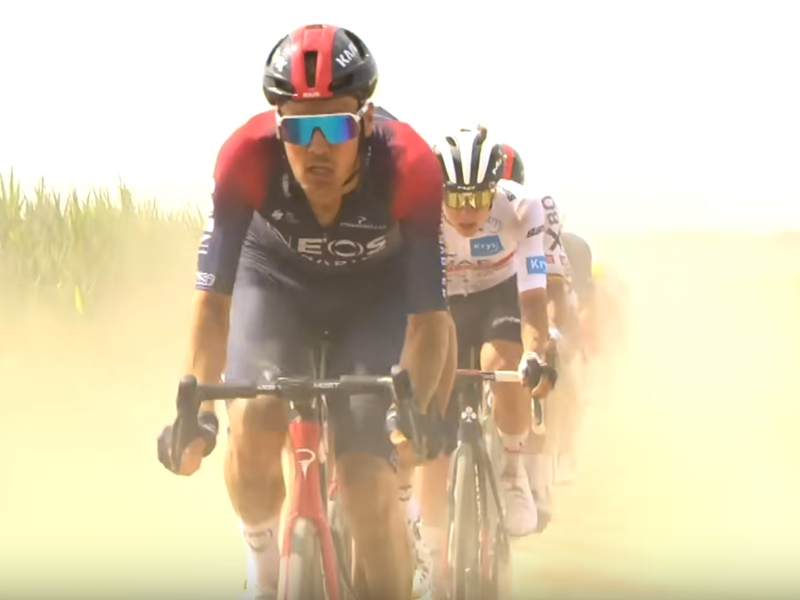
The cobbles aren’t like normal racing. Time gaps are as likely to be made by avoiding misfortune as they are by attacking. Circumstances develop and then you just try and make the most of them or minimise the damage, depending on whether you’ve been beneficiary or victim.
On this particular day, Jumbo-Visma were victims. Vingegaard suffered a mechanical problem and in a blind panic swapped bikes with his much taller team-mate Nathan van Hooydonck. Upon finding that he couldn’t even sit on the saddle, he took another team-mate’s bike… which was also too big. By the time he got his own spare bike off the team car, the race was getting away from him.
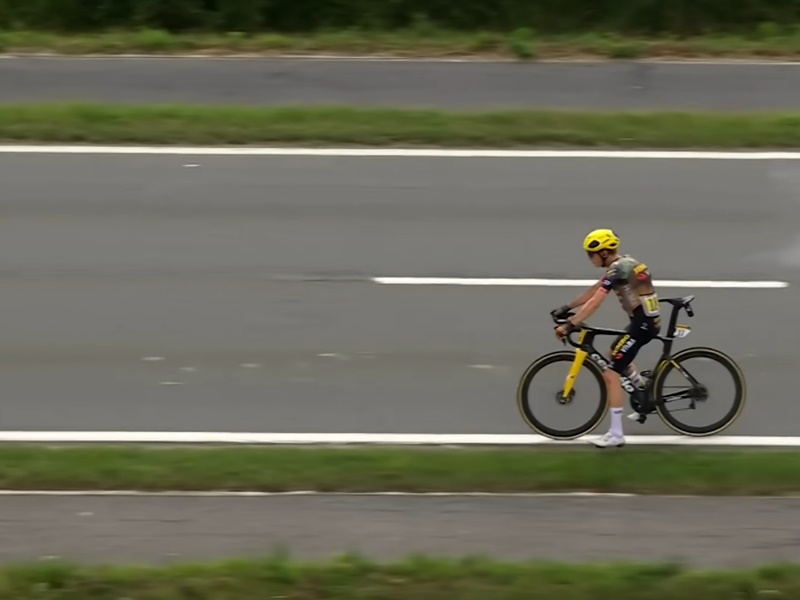
And Vingegaard was the lucky one.
Roglic was momentarily waylaid by riding straight into a bale of straw that had been knocked into the road by one of the race motorbikes. He was then further delayed by having to pop his dislocated shoulder back in himself.
“I do have a technique, like this, to pull down and try to put it back in,” he said afterwards.
Ooookay…
The best way of avoiding these kinds of cobbled catastrophes is to ride right near the front of the group you’re in. This is what Pogacar did because this is what Pogacar is able to do. He emerged unscathed and unscathed generally works out as tantamount to a win in this environment. (Not an actual win – a load of breakaway riders finished ahead of him.)
With that and the hills and the mountains and the time trial, this is where we are going into the middle week. Nothing too remarkable actually beyond the Slovenian’s complete air of imperviousness to absolutely everything.

What’s next?
Straight back in with a summit finish on Stage 10 (Tuesday), then a relatively short but brutal Alpine stage featuring two ‘beyond classification’ climbs, the second of which constitutes another summit finish on Stage 11 (Wednesday).
And then it’s Bastille Day, which if you know anything about Tour de France dates and routes, you’ll know is generally the most gargantuan stage of the race. They start with the 23km 5.1% climb up the Galibier and follow it up with the 29km 5.2% climb up the Croix de Fer, both of which go over 2,000m. That’s a pretty big day, but it’s Bastille Day so they then finish with Alpe d’Huez (13.8km at 8.1%). It’s worth highlighting that this comes after two previous mountain stages as well.
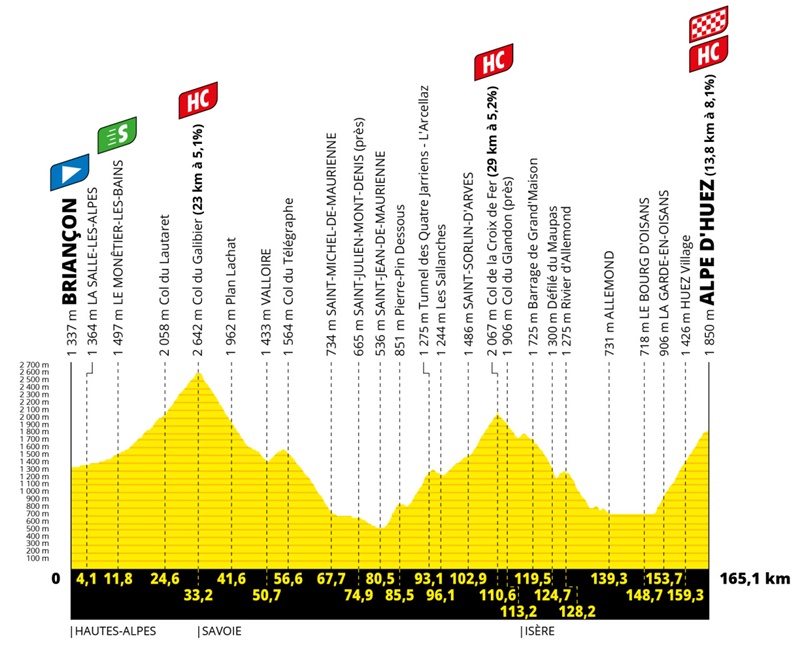
The remaining riders are then treated to what is always referred to as a ‘transitional stage’ to St Etienne on Friday before an uphill finish on Saturday and a bobbly stage that is rated as flat on Sunday.
I’ll have a recap of all that for you on the next rest day or just after. You can sign up for it here, if you haven’t already.

Leave a Reply